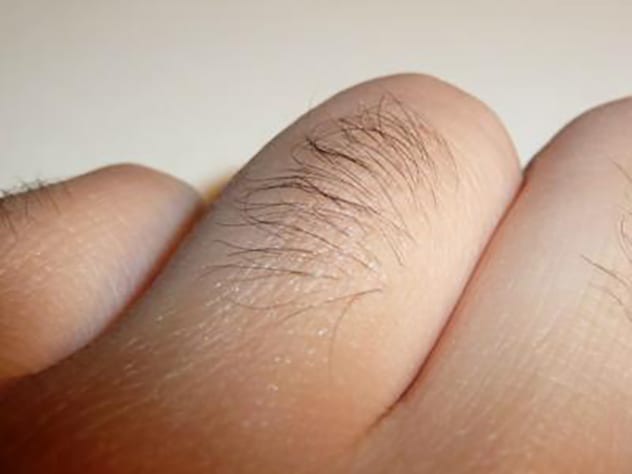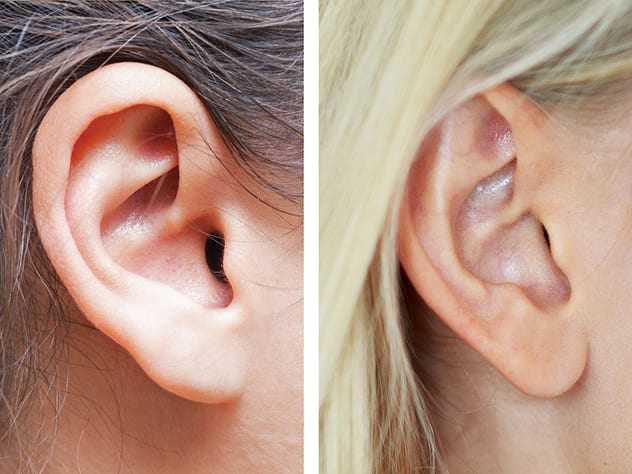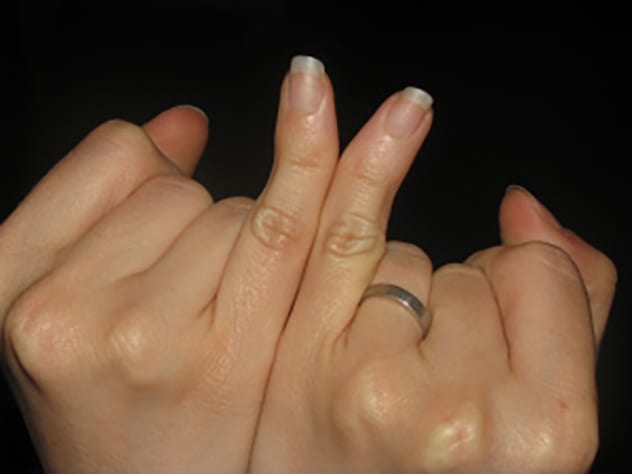 Mysteries
Mysteries  Mysteries
Mysteries  History
History 10 Surprising Stories About the Texas Rangers
 Humans
Humans 10 Philosophers Who Were Driven Mad by Their Own Theories
 Miscellaneous
Miscellaneous 10 Video-Game-Worthy Weapons and Armors from History
 Weird Stuff
Weird Stuff 10 Psychics Who Accurately Predicted Wartime Events
 The Arts
The Arts 10 Pieces of Art Inspired by a Broken Heart
 Health
Health 10 Science Fiction-Sounding New Medical Treatments
 History
History 10 Surprising Facts About the Father of Submarine Warfare
 Space
Space Ten Astonishing New Insights into Alien Worlds
 Weird Stuff
Weird Stuff 10 Bizarre Summer Solstice Rituals Still Practiced Today
 Mysteries
Mysteries Top 10 Haunting Facts About the Ghost Ship MV Alta
 History
History 10 Surprising Stories About the Texas Rangers
 Humans
Humans 10 Philosophers Who Were Driven Mad by Their Own Theories
Who's Behind Listverse?

Jamie Frater
Head Editor
Jamie founded Listverse due to an insatiable desire to share fascinating, obscure, and bizarre facts. He has been a guest speaker on numerous national radio and television stations and is a five time published author.
More About Us Miscellaneous
Miscellaneous 10 Video-Game-Worthy Weapons and Armors from History
 Weird Stuff
Weird Stuff 10 Psychics Who Accurately Predicted Wartime Events
 The Arts
The Arts 10 Pieces of Art Inspired by a Broken Heart
 Health
Health 10 Science Fiction-Sounding New Medical Treatments
 History
History 10 Surprising Facts About the Father of Submarine Warfare
 Space
Space Ten Astonishing New Insights into Alien Worlds
 Weird Stuff
Weird Stuff 10 Bizarre Summer Solstice Rituals Still Practiced Today
10 Strange Personal Traits You Might Not Know Could Be Inherited
The unique appearance of each person on the planet is the cumulative result of generations of inherited traits, mixed with the traits of their chosen partners, to produce the next generation. But while is common knowledge things such as skin color, eye color and hair color are inherited, there are many other things that are passed through families, not always to good effect. There are many genetic diseases, for example, that we might wish were not passed on.
But genetics also has its lighter side. Some of the traits that have been passed from generation to generation without dying out appear to have little or no benefit to mankind from an evolutionary perspective.
But they do make a good talking point.
See Also: 10 Fruits, Nuts, And Vegetables You Did Not Know Were Man-Made
10 Tongue rolling

Around two thirds of people are able to roll each side of their tongue together to form a tube shape, without the least effort, whilst the rest are cursed with flat tongues. One of the more pointless genetic traits, the phenomenon was first noticed by pioneer geneticist Alfred Sturtevant in 1940. He maintained that the ability to roll tongues was a Mendelian trait, meaning that it needed only to be passed down from one of the parents rather than as a blend of both, hence its prevalence. Other Mendelian traits include eye colour and freckles.
Unlike freckles, however, tongue rolling can sometimes be managed. With a lot of practice non-rollers can learn to twist their tongue into a tube shape, though why they would want to is beyond us. A study at Delaware’s Department of Biological Sciences involving 33 non tongue-rollers showed that after a solid month of practice, 1 person managed to master the ‘skill’. Could it be that the other 32 just weren’t bothered?
It is also true that the ability to roll your tongue is not always down to genetics, as studies have shown that sometimes non-genetic causes can also affect the ability of the tongue to bend. And, it seems, there are a few unfortunate people who are neither rollers nor non-rollers, being able to curl their tongues just a little.[10]
Weirdos.
9 Hairy knuckles

If you have hair on the upper part of your fingers, between your knuckles (on the mid-phalangeal joint), it may not be because of your latent Jekyll and Hyde tendencies, but because of your genes.
Anthropologists have studied these stray strands for nearly a hundred years. We can only surmise that it must have been a slow century. It is said to appear most often on the fourth finger, or ring finger, and never appears on thumbs. It is also said to be most common among Caucasians, though the reason for this is not clear.
Researchers believe that the cause may be related to prenatal exposure to androgens, the hormones related to the development of male characteristics. The trait is said to be dominant, meaning that it must be present in one or both of the parents, though the gene for hirsute digits has yet to be isolated.[9]
Surely, there’s Nobel Prize right there?
8 Hand clasping

We may not always be aware of it, but every time we clasp our hands together, we are said to be following the hand-clasping traits of our ancestors. At least one of our parents is likely to fold their hands in the same way we do. Which would, perhaps, be impressive if there was a large number of options. Basically, however, you can clasp your right hand over your left, or your left hand over your right.
So, in a fifty-fifty choice it would be a fair bet that one of our parents clasped hands the same way we do, wouldn’t it? Researchers, however, have gone to great lengths to study this ‘phenomena’, and studies have shown that around 55% of people are left-hand-claspers, 44% are right-hand-claspers, while 1% refuse to be put in a box, and report having no preference.
Not satisfied with these results, researchers went further and researched the family genetics of their subjects, and discovered that the preference follows the same model of genetic inheritance that governs left or right handedness, but that their preference for hand clasping was not related to which hand was dominant.[8]
Spooky!
The same research also discovered the link between hand clasping preferences and arm folding preferences, and the somewhat anomalous findings that menstruating women often changed their minds about which they preferred.
We are not even going to touch that joke.
7 Free Earlobes

If you ever really look at an ear, it starts to look weird. Ears come in all shapes and sizes, and one might think that the ears you get are just down to dumbo luck. But while the shape, size and sticky-outness may be down to chance, your earlobes, it seems, are the result of genetics.
Ears are unique. It is believed that no 2 ears are exactly alike (except, possibly, the one on the other side of your head). The shape of the earlobe, however, is determined by an allele gene, of which, as with all genes, we will receive 2 copies, one from each parent.
Earlobes may seem to have no real purpose, except, perhaps, as an appendage to hang jewelry from, but they are believed to help keep our ears warm due to their generous blood supply, and may even help us maintain balance. The lobe also contains an unusually large number of nerve endings, which is why it is often considered an erogenous zone.
There are 2 major types of earlobes, free and attached. Free earlobes are the most common, where a portion of skin hangs below the point at which it is attached to the side of the head. The free earlobe is thought to be the result of a dominant gene. Attached earlobes, however, tend to be smaller in size and do not hang freely. They are thought to be the result of a recessive gene. However, to date, no discernible benefit has been discovered in the possession of either type of lobe.[7]
Because ears are weird.
6 Sneezing
Most sneezing, of course, is not genetic. Most often it is caused by a virus, an allergy, or environmental factors such as a dusty room. Some types of sneezes, however can have a genetic link.
Some people have an inherited sneeze reflex that is most often linked to exposure to bright light, but can be triggered by other causes too. This photic sneeze reflex, wittily dubbed ACHOO syndrome (which stands for “Autosomal dominant Compelling Helio-Ophthalmic Outburst”, because “Genetically Induced Sneezing” just wasn’t funny enough), is thought to affect between 11 and 35 percent of the population, with Caucasian females being most affected.
The sneezing is a dominant trait, meaning that if one of your parents has the syndrome, there is a 50% chance that you will also have it. However, the syndrome often goes unrecorded because, well, people sneeze a lot. The exact gene responsible for these sneeze attacks has yet to be identified. People with the condition can expect to sneeze up to 40 times each time they walk into bright light, after which their body will adjust.[6]
There is no treatment for the condition, though it can be managed with tissues.
5 A Bent Pinkie Finger

Although not always the result of genetics, a little finger that appears to be bow outwards, can often be said to be an inherited trait. If you want to find the reason your finger is a bit crooked, it may be worth checking out your parents hands first, since if one of your parents has a crooked pinkie, there will be a 50% chance that they will be passing that on.
As with a lot of ‘conditions’ the bent finger may have other non-genetic causes, including injury or disease, and the degree of ‘bentness’ has also been a matter that has concerned researchers. What angle does a finger need to be, in order to be considered ‘bent’? Is it the angle that is inherited, or just the bentness?
Clearly, much more work needs to be done in this vital area. The good news is that corrective surgery is available should the angle of bentness become acute.[5]
4 A Widow’s Peak

It is generally known that male baldness can be linked to genes inherited from the mother. The X chromosome of the mother can contain a genetic predisposition to baldness, although it is not the only cause. Genes passed on from the father can also be a factor, although the chances are higher that the ‘faulty gene’ was passed by the mother where baldness occurs before the age of 40. Hair loss can also be caused by environmental factors, particularly smoking and drinking.
The case for a genetic cause of hair loss in a widow’s peak, however, is much stronger. The distinctive v-shaped hair-line is a dominant trait that can be passed on from father or mother, and both men and women can have a widow’s peak, although, it is much less noticeable in women because they do not tend to lose their hair.
The ‘peak’ refers to a triangular shaped hairline, which becomes more pronounced with hair-loss. Although the peak is hereditary, it does not necessarily mean that baldness will follow as a result.[4]
Although, it probably will.
3 A Long Second Toe

‘Morton’s toe’ is an inherited condition where the second toe is longer than the big toe, and occasionally, the third toe is also elongated. Estimates vary on the number of people who have the ‘condition’, which is named after an orthopaedic surgeon, rather than a man with unusually long foot digits, but it can affect anywhere between 3% and 20% of the population.
Morton believed that the long toe may have been a throw-back to a prehuman era when our ape-like selves used a ‘grasping toe’. This theory, however, has never been proved. Shoe-fitters are apt to call this shape the ‘Greek foot’ after the classical sculptures from Ancient Greece where the long second toe was considered the most aesthetically pleasing. The Statue of Liberty boasts a Morton’s toe.[3]
It is not known whether she inherited it from her mother or her father.
2 A Shock of White Hair

A white patch of hair, usually at the front of the head can be the result of an inherited trait. The streak is known as poliosis, or a ‘Mallen Streak’ after a family in a TV programme who all had a distinctive white patch of hair. Poliosis can affect not just the hair, but also the eyebrows, skin and even eyelashes.
Where the condition is not genetic, the patches may a symptom of an illness. Despite popular myths, however, hair cannot turn instantly white from shock.
For those with inherited poliosis, there appears to be no associated conditions, and no downsides, except a distinctive look that is particularly favoured by devilish women with a penchant for spotty dogs.[2]
1 Tone Deafness

Tone deafness, and its antithesis, perfect pitch, can both be inherited characteristics.
Known as Congenital Amusia, (perhaps because it makes people laugh when you try to sing), inherited tone deafness is a condition in which sufferers are unable to recognize and distinguish musical pieces. They cannot recognize a song from its tune alone, and cannot detect when a song is sung out of tune. Studies have also shown that those with the condition are not able to detect a striking ‘bum note’ in a tune, an ability which most babies are able to demonstrate.
Although it can manifest as part of a brain injury, the vast majority of those who are tone deaf have no other symptoms, and suffer no hardships except being banned from Karaoke. Which is no hardship at all.
In particular, those with congenital amusia are unable to tell that they are singing out of tune themselves. Between 70 and 80% of people who are tone deaf have the inherited condition, and around 4% of the population are thought to be affected.[1]
Which, perhaps, explains the popularity of dubstep.
For more lists like this, check out 10 Genetically Modified Animals Not Intended For Consumption, and 10 Foods That Have Been Genetically Modified Beyond Recognition.








